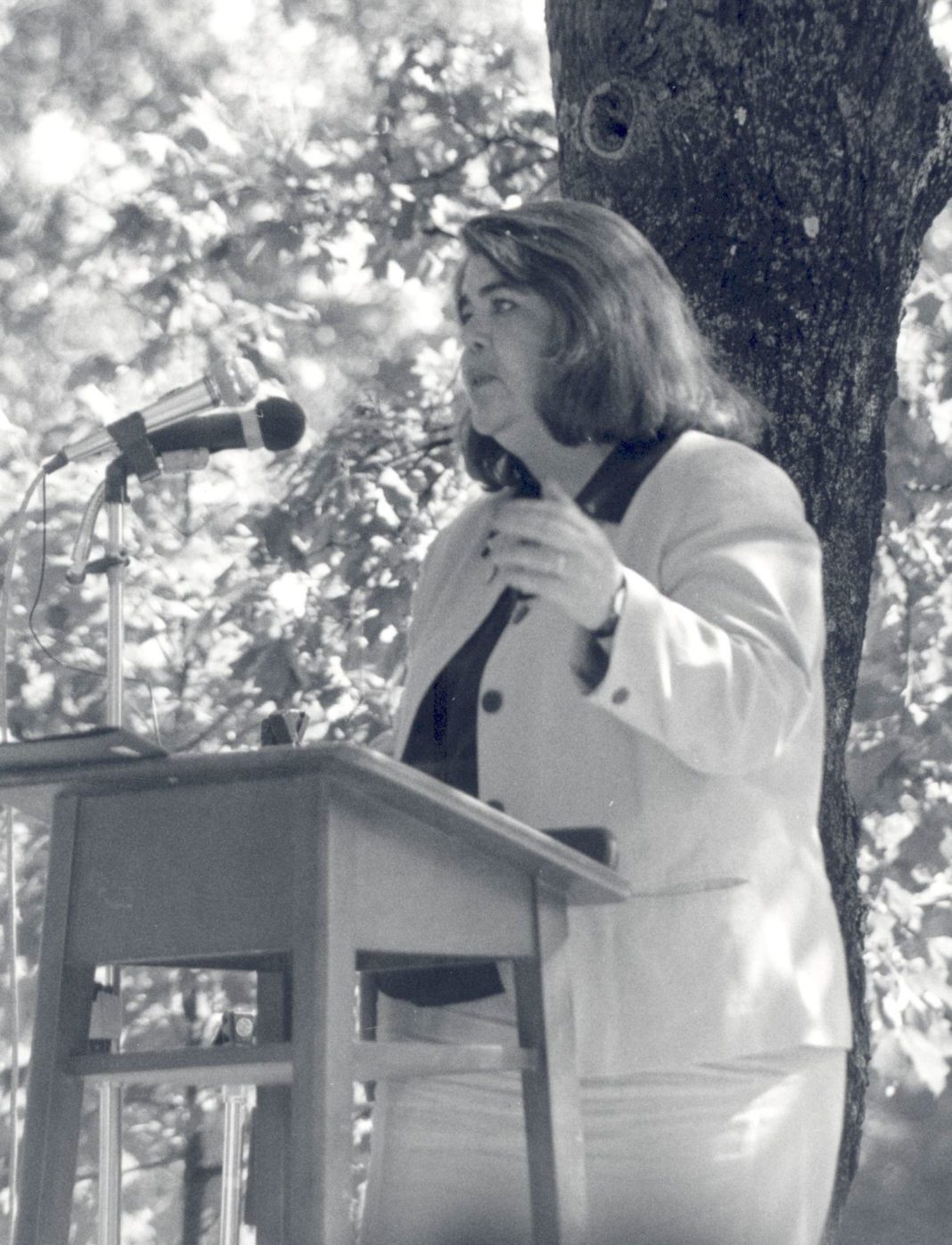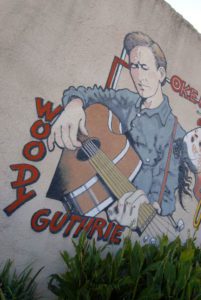The Oklahoma Historical Society has proudly cultivated The Encyclopedia of Oklahoma History and Culture, an online resource available to educate readers on Oklahoma’s history, including notable men and women. Though the list is extensive, and time spent researching would be of value, Elizabeth Bass, Ph.D., director of publications for the Oklahoma Historical Society, shares some insight on just a few of these remarkable Oklahomans.
8Ralph Ellison

Photo courtesy Oklahoma Historical Society
1914-1994
Ralph Ellison grew up within the Deep Deuce district in the then-segregated capital city of Oklahoma, surrounded by jazz and blues. His love for music and arts inspired him to move to New York City, drawn to the impact of the Harlem Renaissance, which ultimately influenced his work in literature. Ellison is most famously known for his writing and literary criticism. Through literature, he strived to represent the Black experience in America. His most lauded novel, Invisible Man, is still studied in classrooms around the nation; it also won the 1953 U.S. National Book Award for Fiction. The Ralph Ellison Library in OKC honors Ellison’s achievements in literature, “reminding generations of the power of the written word to influence the world,” says Bass.
7Ada Lois Sipuel Fisher
1924-1995
Fisher was born in Chickasha. She was her high school’s valedictorian and graduated from Langston University with honors. Despite her academic accomplishments, Fisher was denied admission to the University of Oklahoma College of Law because she was Black. In April of 1946, Fisher filed a lawsuit against Oklahoma’s segregation laws. Thurgood Marshall, later a U.S. Supreme Court Justice, represented Fisher. After losing the county district court and the Oklahoma Supreme Court, the case finally reached the Supreme Court in Washington D.C.; it was known as Sipuel v. Board of Regents of the University of Oklahoma. In 1948, the Supreme Court ruled that Fisher should be granted the same legal education opportunities as white students. The racial obstacles did not end there, however, as Fisher would continue to fight for true educational equality. “The bravery of Fisher to demand an equal education paved the way for the Brown v. Board of Education decision that abolished separate but equal schools,” says Bass.
6Woody Guthrie
1912-1967
Woodrow “Woody” Guthrie was born in Okemah. Within a two-decade frame, Guthrie became one of the most famous folk rock, protest music and urban folk artists in history. The Recording Industry Association of America named Guthrie’s song, “This Land is Your Land,” the third most important song written in the twentieth century. “He wrote for the everyman, the ones beaten down by life, and made their plight visible to the rest of the world,” says Bass. Guthrie understood pain, and his personal life, though oftentimes difficult, inspired his music.
5Joy Harjo
1951-
Tulsa-born Joy Harjo is a member of the Muscogee Nation. She is an accomplished teacher, saxophonist, vocalist and writer. Her poetry, memoirs and music have “exposed a broader audience to the Indigenous perspective in a way that is both beautiful and thought provoking,” says Bass. Harjo is the recipient of numerous awards and accolades, including the Lifetime Achievement Award from the Native Writers Circle of the Americas. Harjo served as the 23rd Poet Laureate of the United States; she is the first American Indian to be honored with that designation. Harjo is a chancellor of the Academy of American Poets and Board of Directors Chair of the Native Arts and Cultures Foundation.
4Clara Luper
1923-2011
Clara Luper was born in Okfuskee County, and earned a bachelor’s degree from Langston University; she later received a master’s degree from the University of Oklahoma. She was the first African American student admitted to the university’s history graduate program. Luper, a renowned political activist, was especially passionate about advocating for youth. Her passions led her to becoming the advisor for the Oklahoma City National Association for the Advancement of Colored People (NAACP) Youth Council in 1957. She helped organize the first sit-in in Oklahoma City, at Katz Drug Store. Luper is credited in helping launch the nation’s sit-in movement as a whole.
3Wilma Mankiller
1945-2010
Tahlequah-born Wilma Mankiller was always fascinated by and proud of her Cherokee heritage. Through her young adulthood, she volunteered for a variety of American Indian organizations and participated in the American Indian Movement protest at Alcatraz Island. Later, Mankiller became the first woman elected as chief of the Cherokee Nation in July 1987. Her advocacy and leadership improved housing, healthcare and education for the tribe. “Her legacy is a beacon for women in positions of power seeking to make a difference,” says Bass. Mankiller was inducted into the Oklahoma Hall of Fame in 1994, and President Bill Clinton awarded Mankiller the Presidential Medal of Freedom in 1998.
2Thomas Stafford
1930-
Stafford, born in Weatherford, finished in the top 25% of his class in the U.S. Naval Academy. He joined the Air Force and then test pilot school at the Edwards Air Force Base. He graduated No. 1 in his class, co-writing textbooks for later trainees. In 1962, NASA selected Stafford as an astronaut. In May 1969, he commanded the Apollo 10 mission, an historical flight that proved the moon landing was possible. In July 1975, Stafford commanded his final mission on the international Apollo-Soyuz flight, a catalyst to ending the Cold War. Stafford and cosmonaut Alexei Leonov met and shook hands. “Thomas Stafford’s road from Weatherford to the orbit of the moon reveals how the pioneering of western Oklahoma carries through to the space age,” says Bass. She continues, saying that Stafford, even after his storied career, “still came back to Weatherford, created a world-class aviation and space museum, and contributed time and talent to his community.”
1Jim Thorpe
1887-1953
Jim Thorpe was born on the Sac and Fox reservation (present-day Prague), and excelled athletically from a young age – in track and field, football and baseball. Thorpe had a prolific professional athletic career; he played baseball for the New York Giants, Cincinnati Reds and Boston Braves, and football for the Canton Bulldogs and Chicago Cardinals. He even created a team, the Oorang Indians. He became the first president of the American Professional Football Association, the precursor to the National Football League. And though his 1912 Olymic wins were stripped of him due to a technicality surrounding the violation of contemporary amateurism rules, the International Olympic Committee restored him as sole winner in the decathlon and pentathlon events in 2022. Thorpe was the first Native American to win a gold medal for the United States in the Olympics.




























